The service and legacy of two pioneering women is embodied in a project that will impact the future growth of West Ocala.
Ruth Ford Reed has never been one to back down from a challenge, whether it be racial discrimination, being stranded while pregnant and traveling with a small child, or fighting for the citizens of West Ocala to be able to breathe clean air.
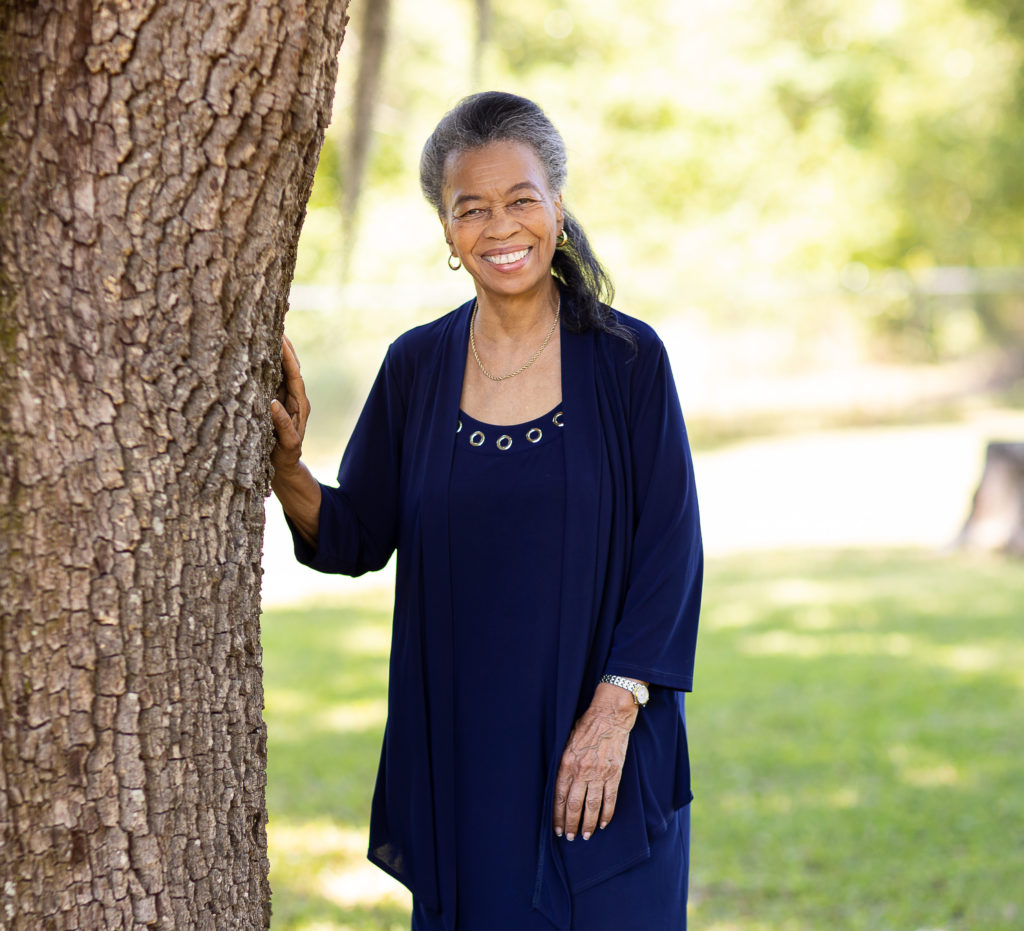 From her sizable property on 18th Court, all Reed has to do is look north to 1921 NW 17th Place where the Royal Oak charcoal plant was once located. Seen as an asset in 1975, when it opened and provided much-needed jobs, the plant was later considered to have a detrimental effect on the community. Residents said soot and ash from the plant would cover their vehicles overnight and coat the outsides of their homes. Though not proven medically, many residents who developed chronic respiratory conditions or cancer blamed their health issues on the emissions and pollution the plant produced.
From her sizable property on 18th Court, all Reed has to do is look north to 1921 NW 17th Place where the Royal Oak charcoal plant was once located. Seen as an asset in 1975, when it opened and provided much-needed jobs, the plant was later considered to have a detrimental effect on the community. Residents said soot and ash from the plant would cover their vehicles overnight and coat the outsides of their homes. Though not proven medically, many residents who developed chronic respiratory conditions or cancer blamed their health issues on the emissions and pollution the plant produced.
“I couldn’t breathe at night without putting a washcloth on my face,” Reed recalled during a speech in 2019.
In 1996, while beginning to investigate the plant’s permitting and alleged infractions, Reed formed the Neighborhood Citizens of Northwest Ocala and served as president, which she still does today.
“I decided, with my neighbors, to do something about it. Many thought we were a joke, because there was a place called Royal Oak. It made the charcoal that you barbecue with. But we were more like being cooked like barbecue all day long. We inhaled that smoke, billowing out at night, flames leaping 300 or 400 feet in the air,” she shared in that same speech. “I lived not a block from it.”
“My grassroots group started doing research, looking up the records,” Reed says of the plant.
Reed explained that they made their case “at City Council, zoning, board of adjustment, every other kind of meeting we could to represent our ideas. And we didn’t care how many times we were defeated, we were determined that we were going to do something about it. What, we didn’t know, but we were tired of living like that for over 30 years. We had a right to clean air, a right to breathe.”
“And, finally, we began to catch them not doing what they were supposed to do. We called town hall meetings. Pretty soon I got a grant of $25,000. We did ground samples and found out the soot and ash had pH carbon traces that would do harm to the body and we dealt with scientists to verify what we were finding. We got in touch with a national environmental organization out of Tallahassee. A student from Forest High School and her mother set out white plates and the ash and soot would stick to them. We kept dating them and stacking them. When the state Department of Environmental Protection (DEP) came down, they wanted to know what evidence we had. I had the pH samples from the scientists and samples of the fallout here on this side of town as compared to the east side because the parent and student lived on the east side of town. We said, ‘We deserve better on the west side. We have a right to clean air, not polluted.’”
Reed recalls “going down to the plant at 5am, in my pajamas and housecoat, checking on what was going on. We lost seven people from this neighborhood to respiratory disease, including my husband,” she alleges.
The Neighborhood Citizens of Northwest Ocala and Wild Law, a nonprofit organization focused on environmental protection, lobbied the Ocala City Council to try to clean up the plant’s operations. The City Council wrote letters to the DEP and to state and federal elected officials. The DEP soon found nine potential violations, including that the plant was emitting a hazardous amount of the pollutant methanol and not reporting it in permit applications.
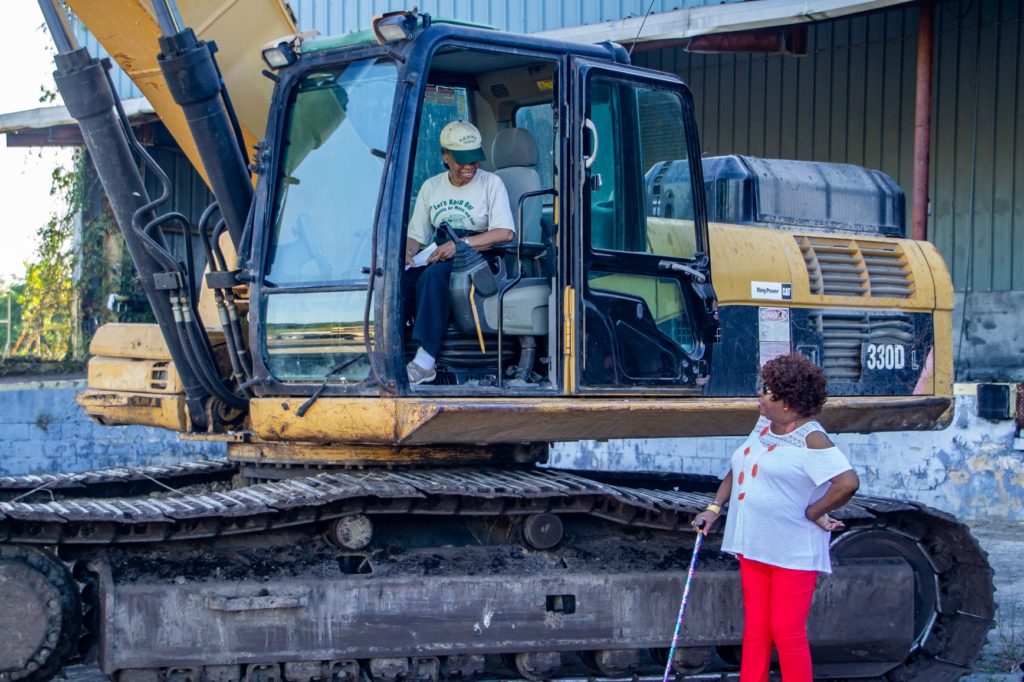 Reed shared the story of a pivotal moment during that speech: “One day, we had a meeting at Lillian Bryant and one of the senators came to our meeting. He said not in my backyard, and not in your backyard any longer. And the City Council issued us a proclamation, saying we will help clean up that facility. We found 17 violations. They didn’t want to repair their business and didn’t want to put a screen over it to keep the smoke from coming out, but we were determined.”
Reed shared the story of a pivotal moment during that speech: “One day, we had a meeting at Lillian Bryant and one of the senators came to our meeting. He said not in my backyard, and not in your backyard any longer. And the City Council issued us a proclamation, saying we will help clean up that facility. We found 17 violations. They didn’t want to repair their business and didn’t want to put a screen over it to keep the smoke from coming out, but we were determined.”
She explains that her group and the city stood fast in their determination that Royal Oak do something. “The Mayor issued us a proclamation saying we will help you. I’m so proud of the city,” she explains. “If you have a problem, keep going to your city council, keep staying in their face, keep telling them what you like and what you don’t like. I didn’t care about the color of my skin. It wasn’t about me. It was about my community. It was about our children. It was about realizing all of Ocala should share clean air, clean water, clean soil and be able to breathe.”
In December 2005, the Roswell, Georgia-based Royal Oak Enterprises announced it would close the Ocala plant by the end of February 2006 due to higher operating costs and environmental issues caused by the poor quality of the raw materials used in the production of charcoal, the reports state.
The plant had 43 employees. Reed says locals were sorry for the employees losing their jobs and that they had tried to reach a resolution with Royal Oak, but to no avail.
In August of 2018, Reed was at the controls of a piece of heavy equipment that began to rip panels off the façade of the main building at the abandoned plant. A cloud of black soot roiled the air.
“When I was bashing it down, all my energy, all my everything went into it and the people had to run back out of the way when they saw that black soot. I mean it went everywhere,” she recalls. “I bashed that thing in with all my might. Good riddance! is what I was thinking.”
Now, the site, named Reed Place in honor of her perseverance, is where the new Mary Sue Rich Community Center at Reed Place is being built. Rich, an Ocala native and longtime resident of West Ocala, was an Ocala City Councilwoman for 24 years. She retired in 2019.
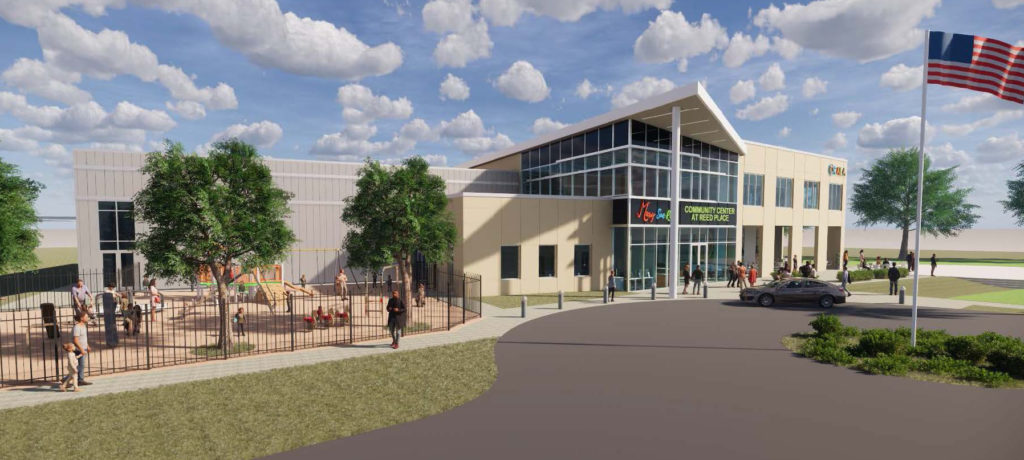 Reed Place spans 24.5 acres in the West Ocala Community Redevelopment Area. The land was acquired from Royal Oak. The community center will be sited on approximately 10 of those acres. The city hopes to redevelop the remaining 14.5 acres as a mixed-use concept as defined in the West Ocala Community Plan. That overall plan calls for 386 single-family homes, 832 multifamily residential units and 150 townhomes on more than 200 acres at 2201 NW 21st Street, which was part of the former Pine Oaks of Ocala Golf Course. The plan requires 20 percent of units to be affordable housing. Nearby is the city’s new 60-acre Ocala Wetland Recharge Park, also on property that was part of the city-owned course.
Reed Place spans 24.5 acres in the West Ocala Community Redevelopment Area. The land was acquired from Royal Oak. The community center will be sited on approximately 10 of those acres. The city hopes to redevelop the remaining 14.5 acres as a mixed-use concept as defined in the West Ocala Community Plan. That overall plan calls for 386 single-family homes, 832 multifamily residential units and 150 townhomes on more than 200 acres at 2201 NW 21st Street, which was part of the former Pine Oaks of Ocala Golf Course. The plan requires 20 percent of units to be affordable housing. Nearby is the city’s new 60-acre Ocala Wetland Recharge Park, also on property that was part of the city-owned course.
Reed was involved in discussions about the park, community center and housing.
“The community center is exactly what we need to pick this area up. It is going to help make us esthetically beautiful,” she shares. “And we have a lot of citizens that need homes. We don’t have enough decent homes for people to live in.”
Reed says the Neighborhood Citizens of Northwest Ocala will continue to “keep our eyes open, monitor the zoning, any changes that come in this area. We gather our people and try to research and try to find out if it is good for the community or a negative.”
“Ruth Reed has always believed that everybody is equal,” offers District 2 Councilman Ire Bethea, a lifelong resident of Ocala, who was formerly with the Ocala Recreation and Parks department. “She is strong, courageous and consistent. I have great respect for her. When you are coming from your heart, there is nothing better.”
“I guess I’ve just been a pioneer all my life. Many times, it’s a lonely road,” Reed says softly. “But you just have to maintain.”
Early Influences
Reed was born in Kansas and says early encouragement from her father helped shape her tenacity.
“My father was a real outgoing person; my mother was totally opposite. I loved his outgoing personality and I think I got mine from him,” she offers. “Anytime my father said I could do something, I could do it! I didn’t care what anybody else said.”
That served her well when her family, at her mother’s urging, moved from Topeka, Kansas to a rural community 150 miles away when Reed was in 10th grade, in 1956.
“Even though integration took place in 1954, there was still an all-Black school in Nicodemus,” she recalls, adding that some members of Black families told her father that officials would not let his children attend the integrated school in nearby Council Grove.
“So, my father says, ‘I’m not going to send my children to an all-Black school. They’ve been going with white and they are going to continue to go with whites.’ He enrolled us and they acted like they were delighted to have us. I only had a few incidents. Most of the people greeted us.”
She recalls there were still signs in the area indicating that “whites only” could enter certain locations.
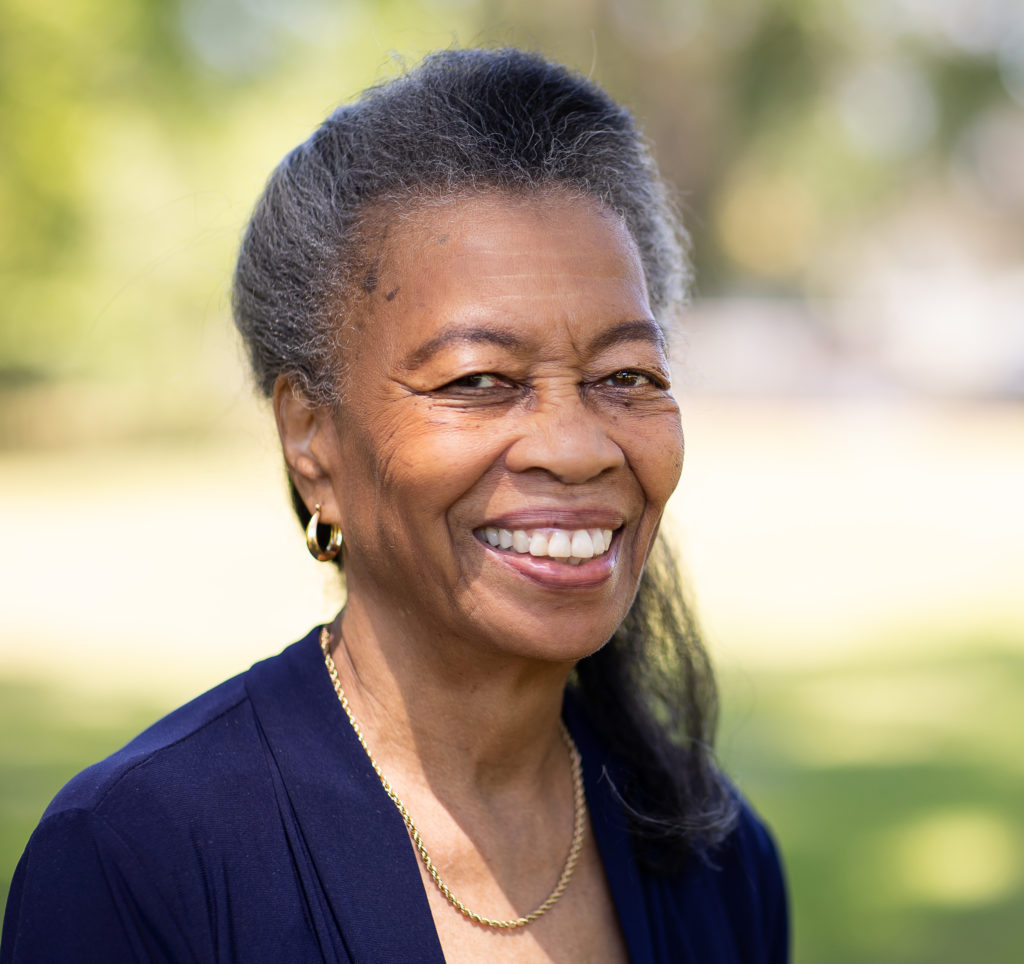 By 1960, Ruth was married to Leroy Reed. He served in the U.S. Army for four years and then obtained a bachelor’s degree. He took a job at Hampton Junior College in Ocala because he “was dark skinned and couldn’t get a job in Kansas,” she explains, adding that she had given birth to their first child and was pregnant with a second, and was to follow him to Florida a little bit later.
By 1960, Ruth was married to Leroy Reed. He served in the U.S. Army for four years and then obtained a bachelor’s degree. He took a job at Hampton Junior College in Ocala because he “was dark skinned and couldn’t get a job in Kansas,” she explains, adding that she had given birth to their first child and was pregnant with a second, and was to follow him to Florida a little bit later.
“He was supposed to work a month and then send for me. But my father kept telling me about these ladies down south and I got a little jealous. Then my baby got sick and my mother was taking in other kids and I grabbed the last bit of money I could and boarded a Greyhound bus,” Reed recalls. “I thought the bus would bring me to Ocala, but it dropped me in Tallahassee. I changed my ticket and when I got to Perry, they put me off the bus and told me, ‘That’s the end of the line.’ I said, ‘Sir, I paid to go to Ocala and I’m going to Ocala.’
“I sat there for five hours in the sun. Black people would tease me and say, ‘You must be crazy, they’re not going to put you on that bus.’ And I said they are going to put me on that bus because they messed my ticket up. I went in and checked a couple of times and a man said, ‘I know you’ve got to have more money,’ and I said, ‘Sir, I have $2.50 for my baby’s milk and I’m pregnant with another child.’ I said, ‘I am going to Ocala, so put me back on the bus. Do what you have to do.’ After five hours, they put me on a bus and I came to Ocala.”
She caught a ride from the station to the college with a friend she made on the bus, whose grandfather tied all her belongings onto the back of a Model T Ford.
“Off we went, humpety, humpety, out to Hampton Junior College. They didn’t have any roads paved,” she shares. “It was down in a hole, then up on the hill, down in the rut, and I said, ‘Where in the world are we going?’”
When she asked to see her husband, he didn’t believe it was her and questioned the woman who had greeted her.
“He said, ‘She’s in Wichita, Kansas. And the lady said, ‘No, she isn’t,’” Reed remembers. “He said is she bright-skinned and she said yes. He said is she pregnant and she said yes. He came out and he didn’t say I love you, the first words he said were, ‘Why are you here?’
“He said we have no place to live. And I said oh yes, we do, wherever you’re living, I’m living!” she says with a laugh. “The lady said you can’t live there. I said, we’ll live in the car then. We found a place before the day was out.”
Leroy obtained a doctorate degree and Ruth decided she wanted to also be an educator and attend the University of Florida in 1966.
“They told me I couldn’t go. That’s all they should say, because I went,” she says of her stalwart determination.
After earning a bachelor’s degree in education, she began teaching in local schools and first taught fourth grade, then fifth grade for the last dozen years of her career.
“They were doing double sessions and you could teach in the morning or the afternoon. I had four kids, so I chose the afternoon,” she says. “I didn’t go to work until 5 o’clock. You’d work from 5 until 7 or 8 o’clock. I didn’t care if it was 9 o’clock because I had mornings to do what I wanted to do. I had a garden, I took care of the kids, I did my errands, I did my school work. I was well prepared. And then one teacher said I wouldn’t get a job at Shady Hill Elementary because it was upper class and there were no Blacks there. And I said I’m going to integrate it.”
“I was the only Black they hired,” she notes. “I worked there about five years and we had educators come from the state educational system and they pulled me aside and asked what is one thing that needs to be done. And I said send some more Black teachers out here, because there are 750 students and only one Black teacher.”
Reed, who obtained a master’s degree in administration and supervision from Nova University in 1979, retired from teaching at age 55, in 1996.
Devoted to District 2
Ocala City Council District 2 includes the area where the Royal Oak charcoal plant was located. Mary Sue Rich served in the District 2 seat for 24 years.
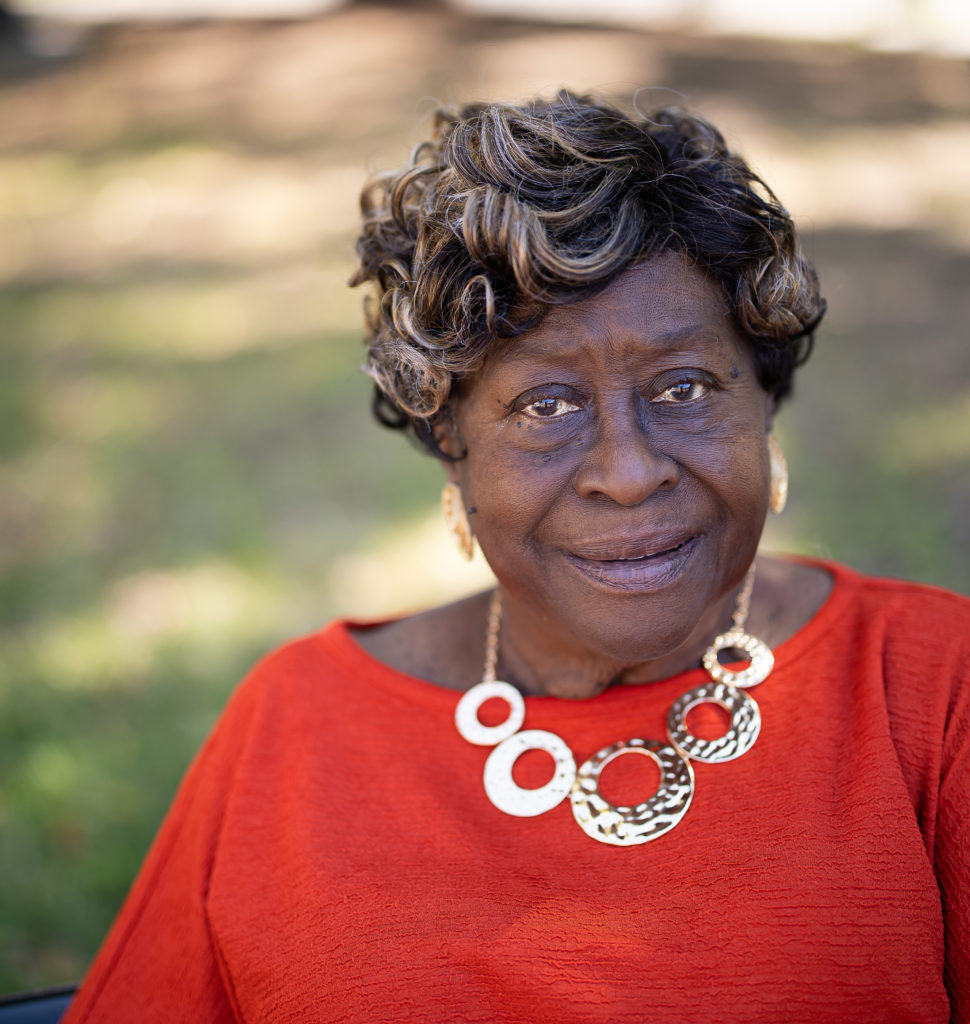 “I remember the emissions from that charcoal plant,” she recalls. “You would wake up in the morning and your car and house would be covered with ash and soot.”
“I remember the emissions from that charcoal plant,” she recalls. “You would wake up in the morning and your car and house would be covered with ash and soot.”
Rich also recalls years of involvement with Reed’s nonprofit group and city and state agencies in investigating the allegations about the plant.
“I think it caused some people to have cancer. We can’t prove that,” she states, “but we think it did.”
“A number of people were involved with that plant for years, but it was Ruth Reed who never gave up,” Rich recalls.
After the plant closure, the city bought the property.
“We bought it to secure it for the future,” she says. “And then somebody brought up the idea of putting a community center there.”
The new center, which is estimated will cost $10.3 million to create, is named in honor of Rich’s long civic and community service, including her work in establishing the Racial Harmony and Cultural Awareness Task Force. The 41,750-square-foot, two-story center will include a gymnasium, fitness center, library, meeting rooms, child play area, auditorium and kitchen. The groundbreaking took place earlier this year. Construction should take about a year. The city is paying $8 million from reserves in the general, electric and water resources funds, through a 20-year loan with a 2 percent interest rate. The other $2.3 million will come from the Marion County Hospital District, which will oversee nutrition and health initiatives at the center through its Active Marion Project and Fitness and Nutrition in Schools.
Rich, who remains involved with the city and her church, even while on dialysis three times a week and recovering from knee surgery, says the community center will be her physical legacy, but she hopes her personal legacy will be that she’s “been involved with so many things to enhance the lives of people in Ocala, to make things better for them.”
She explains that her dedication and motivation to advance the quality of life here stems from her love of our community.
“Ocala was a great place to raise my children. It’s not a big city and it’s not a small country town,” she declares. “I just want people to enjoy living in this beautiful part of the country.”
“Still Advocating”
As a city employee and a resident of West Ocala, Bethea was part of committees that looked at the quality of life in West Ocala and advocated for a venue to host indoor and outdoor sports and a play area for children, as well as a space to host events such as banquets. Initially, studies were done on the feasibility of establishing such a center at the E.D. Croskey complex or Lillian F. Bryant Park venue.
“We looked at the history of the E.D. Croskey Center, access to both centers and bringing people into the west side, like on the east side,” he says of the path that led to situating the new community center where the charcoal plant had been.
He has experienced firsthand the continued passion and determination of the women for whom this historic site and center are named and recognizes their ongoing willingness to be champions for the community.
“Mrs. Rich and Mrs. Reed are still advocating, always asking, ‘How can I help you?’” Bethea notes. “They are for one Ocala, not just West Ocala.”
He says some of the defining qualities that Reed and Rich share is that they “actively listen to others, express ideas clearly and share their knowledge,” enthusiastically adding, “I applaud them.”






